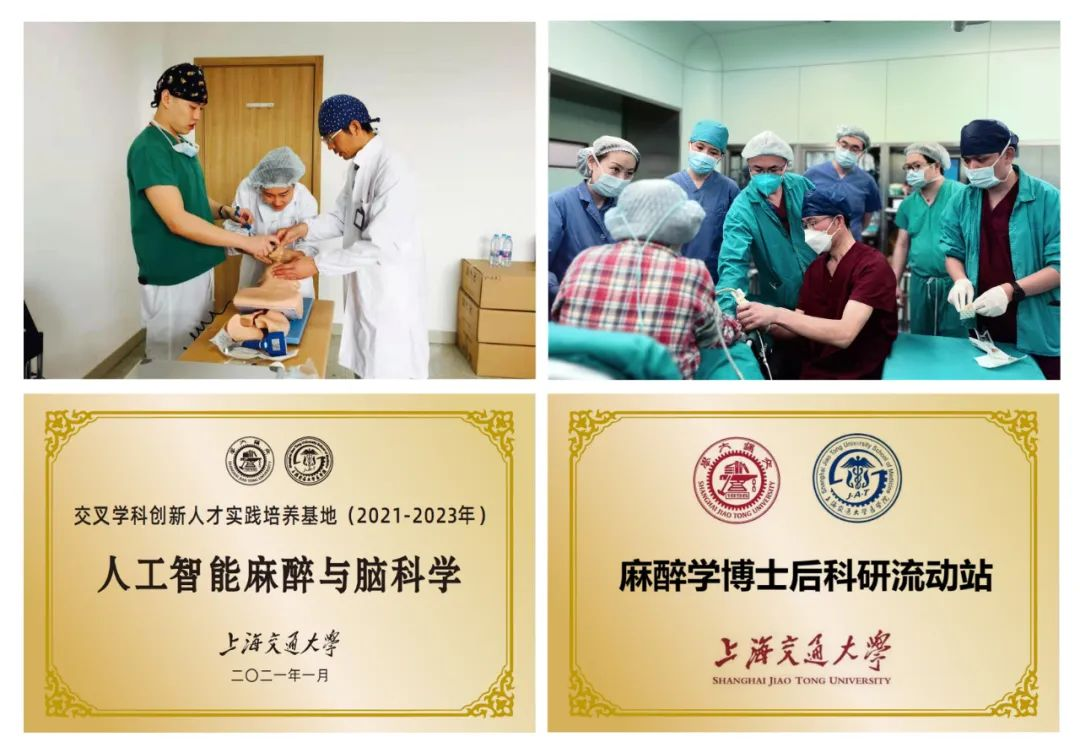
Introduction
The Department of Anesthesiology of Shanghai Sixth People's Hospital was established in 1984, marking one of the pioneering anesthesiology departments in China. Its notable history includes the successful performance of brachial plexus block anesthesia for the first replantation surgery of a severed limb in international medical history, accomplished by senior anesthetists in 1963. Today, the Department of Anesthesiology stands as a key discipline of Shanghai Jiao Tong University School of Medicine and Shanghai Sixth People's Hospital. It serves as a hub for professional training, research, and clinical excellence, holding various prestigious titles such as the "Training Base for Interdisciplinary Innovative Talents" of Shanghai Jiao Tong University and awards master's and doctoral degrees in Anesthesiology. It also operates as a postdoctoral station of Shanghai Jiao Tong University School of Medicine and a national drug clinical trial base. Additionally, the department functions as a standardized training base for anesthesiology residents and specialists, acknowledged as a regional anesthesia training base by the Chinese Medical Association.
With a total of 94 operating rooms across the Xuhui and Lingang campuses, the department boasts state-of-the-art facilities and equipment, including high-standard anesthesia preparation rooms, nerve block operating rooms, and advanced monitoring systems. Its comprehensive service offerings encompass clinical surgical anesthesia, critical care medicine, day surgical anesthesia, pain management, and anesthesia clinic services. Over the years, the department has developed a professional focus on trauma orthopedic anesthesia and ultrasound-guided regional anesthesia technology, with expertise in difficult airway management, fluid resuscitation, and early detection and treatment of trauma-related complications.
Specialties
- Ultrasound Visualization Anesthesia Technology: Pioneering ultrasound visualization anesthesia technology since 2006, the department has become a leader in the field, offering advanced solutions for regional anesthesia, perioperative assessment, and pain management. This technology, which has reached international standards, is instrumental in providing high-quality perioperative analgesia and has been widely recognized through national-level continuing education programs.
- Visual Awake Tracheal Intubation Technology: The department utilizes visual awake tracheal intubation technology for difficult airway cases, ensuring patient safety and comfort throughout the procedure. By combining ultrasound-guided regional anesthesia with fiberoptic bronchoscope guidance, the department achieves complete visualization of the intubation process, minimizing patient discomfort and enhancing safety.
- General Anesthesia of Hip Joints in Elderly Patients: Employing breathing-preserving laryngeal mask general anesthesia combined with regional anesthesia, the department offers innovative solutions for elderly patients undergoing hip joint surgery. This approach not only ensures comprehensive perioperative analgesia but also promotes early postoperative recovery and functional rehabilitation, significantly improving patient outcomes.
- Perioperative Multimodal Analgesia: Utilizing a combination of regional anesthesia and intravenous analgesics, the department provides individualized pain management strategies before, during, and after surgery to optimize patient comfort and facilitate rapid postoperative recovery.
- Treatment and Prevention of Pulmonary Embolism: Conducting extensive research on pulmonary embolism mechanisms and prevention strategies, the department establishes standardized protocols for early detection and treatment of perioperative pulmonary embolism, thereby enhancing surgical safety and patient outcomes.
- Perioperative Brain Protection and Monitoring: Collaborating with leading neuroscience institutes, the department studies general anesthesia mechanisms and brain function monitoring techniques to ensure perioperative brain function preservation. By integrating clinical anesthesia depth monitoring and intraoperative awakening under general anesthesia, the department effectively safeguards patients' neurological well-being during surgery.
- Painless Management of Outpatient Procedures: Offering outpatient painless diagnosis and treatment services, the department ensures patient comfort and safety during invasive examinations and procedures. With a focus on short-acting anesthetic drugs and comprehensive preoperative evaluation, patients receive pain-free care and can promptly resume their daily activities.
Through its dedication to innovation, excellence, and patient-centered care, the Department of Anesthesiology of Shanghai Sixth People's Hospital continues to uphold its commitment to providing the highest quality anesthesia services and advancing the field of anesthesiology.





